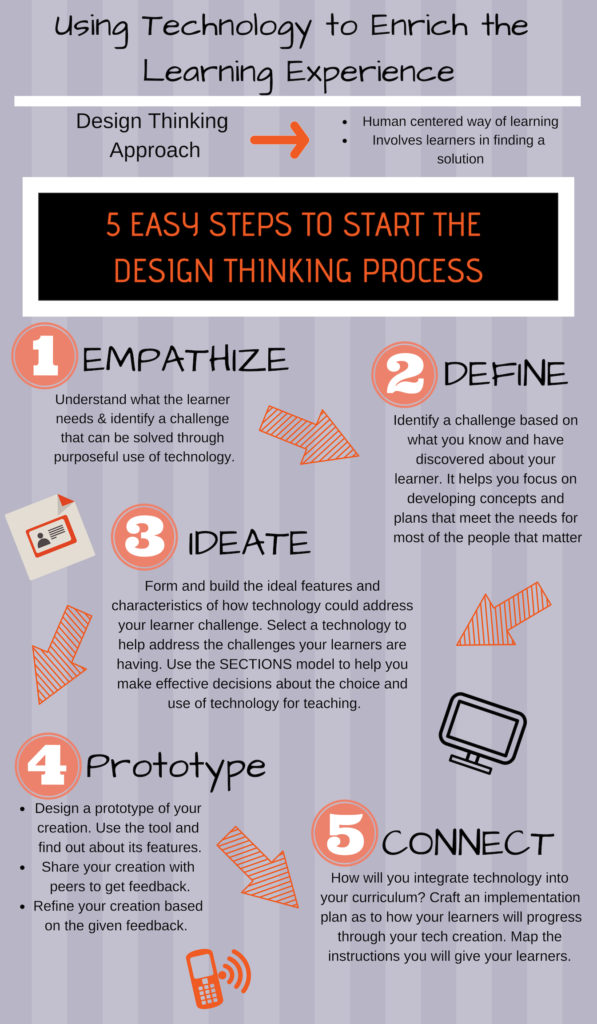As teachers we want to be able to introduce technology into the classroom but it is often difficult to do so in a way that supports the learning experience. This article helps educators figure out how to integrate technology into the classroom in an ineffective way. In order to teach with technology in an effective way we must consider digital literacies. We have to be able to communicate information while using technology and learn how to engage responsibly in online communities. Developing these skills is an ongoing process and won’t just happen at once. The article also informs us about the design thinking approach. It is a human-centered approach and the people who will benefit from this product are involved in the design. In an educational setting, it helps students become active participants in their own learning. There are five steps to the design thinking process:
- Empathize. You must understand who this is being designed for and what that person needs. For the learner, we must identify a challenge that could be solved through the purposeful use of technology in the classroom.
- Define. Now we must identify a problem based on what we have discovered about the learner. It is best to start small. A good learner challenge provides focus and frames the challenge, inspires others, informs how you will evaluate, captures the readers, and helps for most of the readers.
- Ideate. It is time to form the features of how the technology could work in the classroom. Asking “How might I…?” or a mind map helps when creating your ideas. First we must pick a technology tool to help address the challenges that the learners are having. After selecting the proper tool, we must use the SECTIONS model to evaluate if it is the proper tool to use. It helps decide if it’s a good fit for your students, the course, or your classroom by taking into account things like ease of use, privacy, cost, etc.
- Prototype. This is the step where we design a prototype of the creation. Play around t=with the tool you have chosen and find out as much information about it as possible. Next, share your prototype with peers or learners and get feedback from everyone. Take that feedback into account and make the necessary changes to the original prototype.
- Connect. Figure out how to integrate this technology into the curriculum. Give your learners clear instructions on what to do and link the activity into the learning outcomes.
I chose to create a poster on Canva as my artifact. I wanted people to easily see the five steps involved in the design thinking process. This way they can use it as a reference when trying to find technology to help facilitate the learning going on in the classroom. I think that this module is an incredible tool to have as a teacher. The website itself is easy to navigate and it offers many outside resources for readers to check out. I really enjoyed how it gave examples of ways to do each step of the process. For example, in the “Ideate” section it gives us examples of mind maps to help organize our ideas before creating a prototype. This website gave us many different resources that we can carry over to any subject in the classroom. Sometimes as teachers we have so many ideas but need help with organizing or implementing them. This is a step by step guide to make sure that the ideas we do come up with are effective and won’t waste our time or our learners’ time. There are many different types of learners in the classroom and not all of them are comfortable with technology or may be new to using it. This article helps us with making sure each person in the classroom has an equal opportunity in learning.

